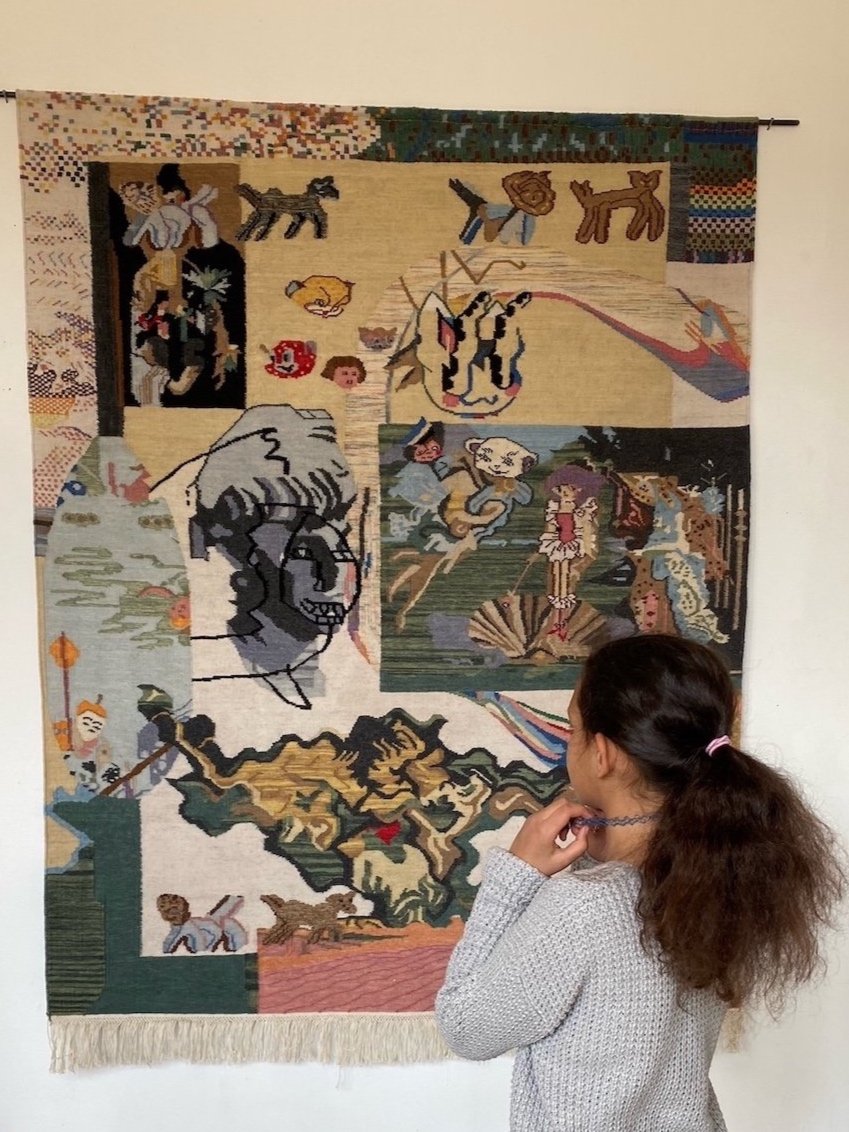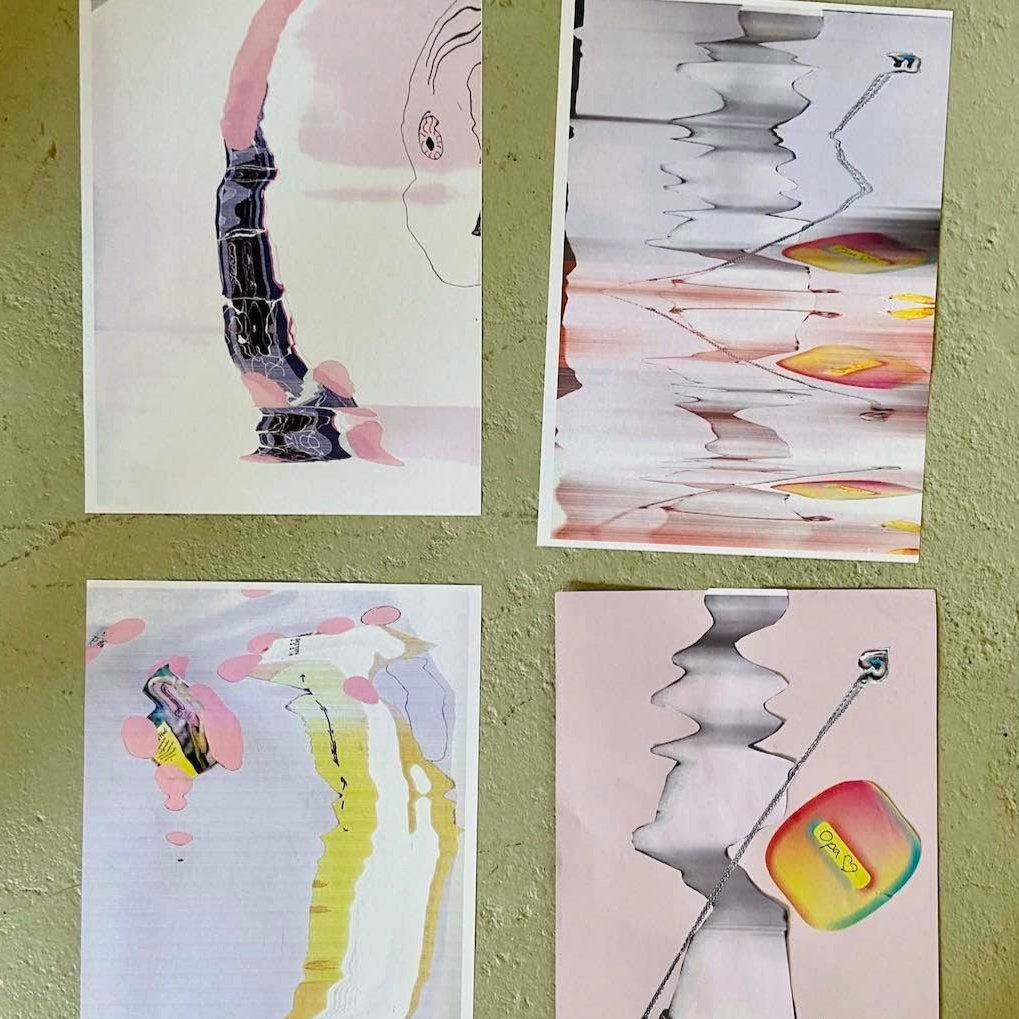Wie-yi T. Lauw, Artist of Hiding
Wie-yi T. Lauw’s studio is located in bustling Neukölln, between playgrounds, bars and workshops – and somehow the city lives on in her studio. Various masks and statues are scattered around the room, for example small Buddhas that Wie-yi bought in a Vietnamese supermarket, and even a real motorcycle stands in the corner! One of the many pictures leaning against the walls also shows a motorcycle – or should we rather say no motorcycle? All you can see is a blue tarpaulin, and we only guess what’s hiding underneath on the third try.
Wie-yi loves to hide things or to alienate them. That means to change them so much that they still remind us of their origin, but at the same time they can mean many other things, that is, they have become “strange”. Actually, art usually tries to show things, to depict and exhibit them. Why then does Wie-yi do exactly the opposite? There are several reasons, she says. For one thing, hidden things stimulate the imagination and make us think for ourselves about what is hidden behind the facade. In the process, almost every person sees something different in the pictures and sculptures (we’re still puzzling over the one on the table – sweating Buddha or melting ice cream cake?).
Above all, however, Wie-yi’s works are about identity, that is, about who we are. There is often a big difference between the way we perceive ourselves or what our biography says about us, and what other people think about us, for example, based on our appearance. Wie-yi herself, for example, was born in Vienna and speaks Austrian (Viennese is her favorite language). However, her ancestors come from Indonesia and China, and her name also sounds different from most German or Austrian names. The Vienna registry office even claims that her name does not exist. (That’s nonsense, of course, because Wie-yi is called that.) So her own identity is very complex and has been shaped by different stories, places and people. Many objects also tell complex stories, but are often perceived or “read” only in a certain way. By obscuring, hiding, and defamiliarizing these things, Wie-yi attempts to make the complex and ambiguous visible.
She often uses manufactured objects to do this, such as the Buddha statues or masks we discovered earlier. Wie-yi distorts, twists, doubles or divides these objects by slowly dragging them across a scanner. This creates amazing and funny shapes – one of the pictures looks like breakfast bacon because of the long stripes! We then get to try this technique ourselves, using objects that are special to us and that we brought from home: an Egyptian statue, a locket with a photo of Grandpa, a petrified sea urchin, a photo of a dog. We make the craziest scans, cut out, collage and rescan again, until in the end a whole landscape of shapes and colors has emerged from one object. Some of it is precisely planned, but other things are surprising and random, and that’s often what we like best. When we pack up our objects again, they seem to look a little bit different than they did in the morning – at least the pharaoh’s smile suddenly seems quite mysterious ...





